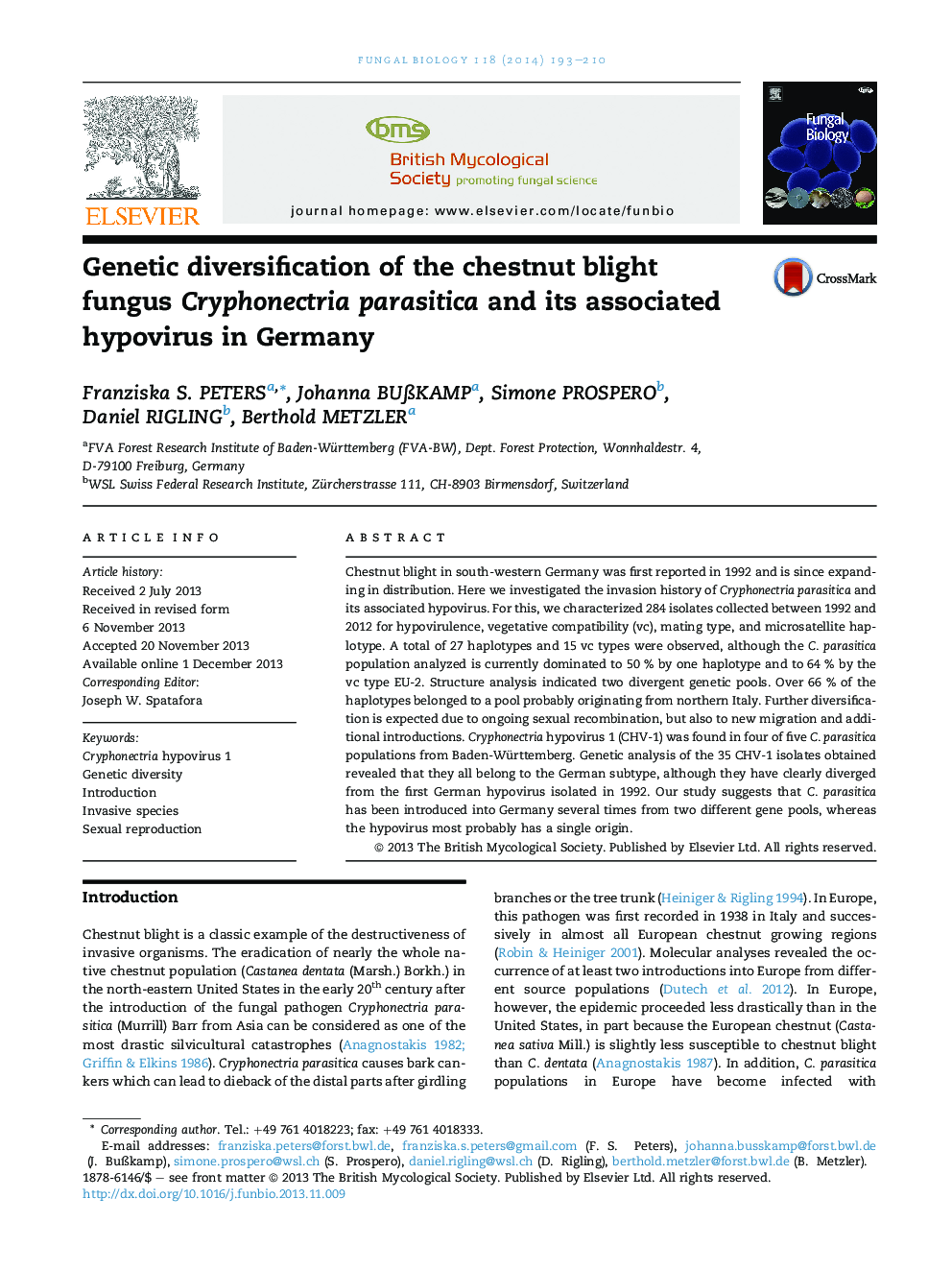| Article ID | Journal | Published Year | Pages | File Type |
|---|---|---|---|---|
| 4356862 | Fungal Biology | 2014 | 18 Pages |
•The Cryphonectria parasitica population is still largely clonal after existing >25 y in Germany.•Genetic diversification is due to plural introductions & incipient sexual reproduction.•15 vc types and 27 haplotypes from two genetic pools were identified.•Hypovirulence is present and increasing in one region with an incidence of 10–25 %.•All German hypoviruses are variants of the same CHV-1 subtype (CHV-1/D).
Chestnut blight in south-western Germany was first reported in 1992 and is since expanding in distribution. Here we investigated the invasion history of Cryphonectria parasitica and its associated hypovirus. For this, we characterized 284 isolates collected between 1992 and 2012 for hypovirulence, vegetative compatibility (vc), mating type, and microsatellite haplotype. A total of 27 haplotypes and 15 vc types were observed, although the C. parasitica population analyzed is currently dominated to 50 % by one haplotype and to 64 % by the vc type EU-2. Structure analysis indicated two divergent genetic pools. Over 66 % of the haplotypes belonged to a pool probably originating from northern Italy. Further diversification is expected due to ongoing sexual recombination, but also to new migration and additional introductions. Cryphonectria hypovirus 1 (CHV-1) was found in four of five C. parasitica populations from Baden-Württemberg. Genetic analysis of the 35 CHV-1 isolates obtained revealed that they all belong to the German subtype, although they have clearly diverged from the first German hypovirus isolated in 1992. Our study suggests that C. parasitica has been introduced into Germany several times from two different gene pools, whereas the hypovirus most probably has a single origin.
